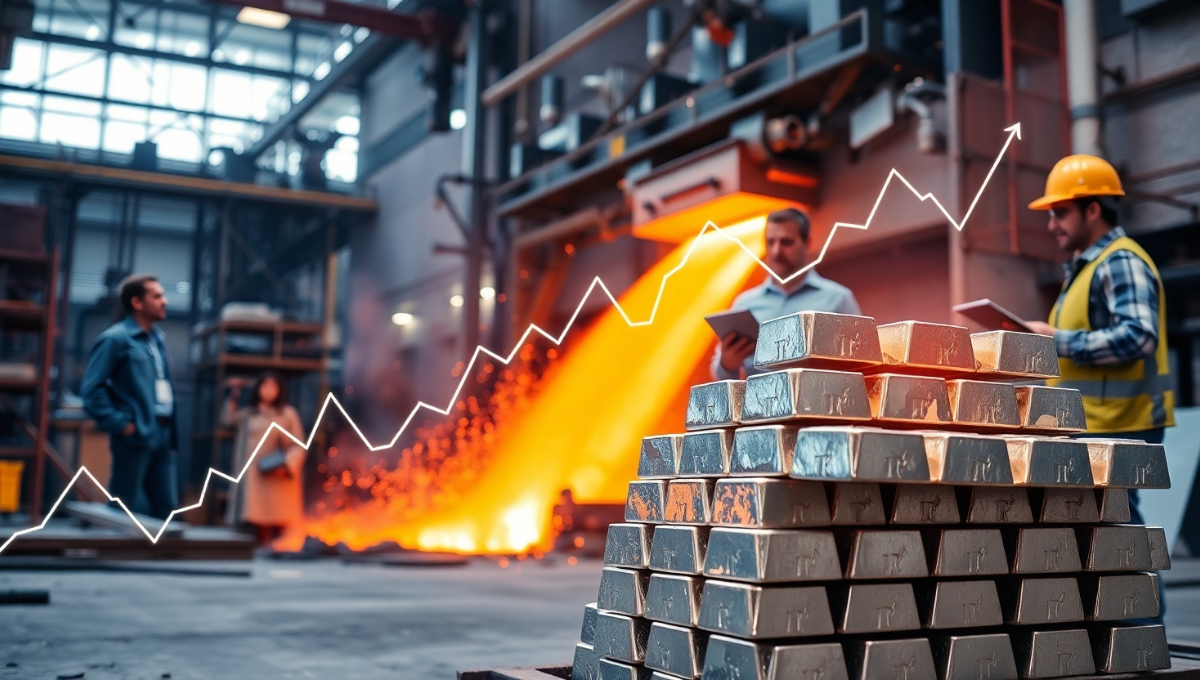Introduction
In 2025, the global aluminium industry is experiencing a significant price surge. As of Q2 2025, aluminium prices on the London Metal Exchange (LME) have crossed US$2,500 per tonne, marking a 35% increase from the previous year. This development is causing ripples across multiple sectors, including automotive, construction, packaging, and electronics.
This article explores the major factors behind the price hike, how it affects businesses, and what industry professionals can do to mitigate risks and adapt to ongoing market shifts.
Why Aluminium Prices Are Increasing in 2025
Several key factors are contributing to the surge in aluminium prices:
- Rising Energy Costs
Aluminium smelting is an energy-intensive process. The global rise in electricity and natural gas prices has led many smelters, especially in Europe and China, to reduce capacity or halt production. - Supply Chain Disruptions
Disruptions in the supply of bauxite (the raw material used in aluminium production) from major exporters like Guinea and Australia have reduced global output. In addition, political instability in certain mining regions is worsening the situation. - Strong Demand Across Industries
Aluminium demand continues to grow in sectors like electric vehicles (EVs), aerospace, consumer electronics, and infrastructure. This demand-supply mismatch is driving up prices. - Geopolitical Tensions
Sanctions on Russian aluminium and shipping disruptions due to conflicts in the Red Sea and other regions have further tightened supply chains.
Impact on Key Industries
Manufacturers and Fabricators
- Input costs have increased significantly, forcing many to either absorb losses or raise prices.
- Smaller fabricators are facing margin pressure due to volatile aluminium prices.
Construction Sector
- Builders using aluminium for facades, windows, and roofing are facing budget overruns.
- Some developers are switching to alternative materials to manage costs.
Automotive and EV Sector
- Electric vehicle manufacturers are especially impacted as aluminium makes up a substantial portion of vehicle weight.
- The increased cost of raw materials may be passed on to consumers, raising EV prices.
Aerospace and Aviation
- Aluminium is critical in aerospace applications. Aircraft manufacturers are experiencing higher procurement costs, which may affect production timelines and pricing.
Packaging and Consumer Goods
- Aluminium packaging is widely used in food and beverages. Rising costs may affect FMCG pricing and profit margins.
Regional Outlook and Analysis
Europe
Smelters in Germany and France are operating at reduced capacities due to energy costs. The EU is exploring green hydrogen as a long-term solution to reduce dependency on fossil fuels.
India
Major aluminium producers like Vedanta and Hindalco have announced price increases of 20 to 30 percent. The domestic market is seeing growing demand from infrastructure and mobility sectors.
Middle East
The UAE’s Emirates Global Aluminium (EGA) continues to expand its output, benefiting from energy subsidies. This may help stabilize global supply in the latter half of 2025.
United States
Importers are facing increased shipping and customs costs. Local recycling initiatives are being promoted to reduce dependency on imported aluminium.
Short-Term and Long-Term Forecasts
Short-Term Outlook (Next 6 Months)
- If energy costs remain high and no new smelter capacity comes online, aluminium prices may cross US$2,800 per tonne.
- Price volatility will continue due to global political uncertainty and demand from EV and green infrastructure projects.
Long-Term Outlook (2026 and Beyond)
- Aluminium prices may stabilize as new production facilities in Asia and the Middle East come online.
- Sustainability initiatives and technological innovation in smelting could help control costs.
What Businesses Can Do to Manage Price Volatility
- Secure Long-Term Contracts
Partner with reliable suppliers and negotiate long-term pricing contracts to hedge against volatility. - Invest in Process Optimization
Use lean manufacturing, CNC optimization, and scrap recycling to improve material efficiency. - Monitor Market Trends
Stay informed about global aluminium trends to make data-driven decisions. - Use Alternatives When Possible
Evaluate the feasibility of using alternative materials like thermoplastics or composites in non-critical applications. - Collaborate with Industry Bodies
Participate in industry forums and trade associations for market insights and policy advocacy.
Conclusion
The aluminium market in 2025 is undergoing dynamic shifts due to a combination of economic, environmental, and geopolitical factors. Understanding the causes and impacts of rising prices is essential for businesses to adapt, innovate, and thrive.
By monitoring trends, optimizing processes, and planning strategically, manufacturers and investors can navigate aluminium price volatility and turn challenges into opportunities.
For ongoing updates, expert analysis, and job opportunities in the aluminium sector, visit AluTimes.com regularly.

